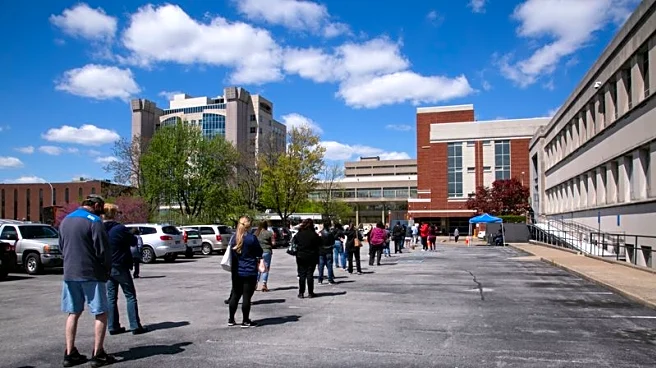What's Happening?
According to ADP's latest real-time estimate, U.S. firms have been shedding over 11,000 jobs per week through late October. This data highlights a weakening labor market, despite a previous report indicating
a net gain of 42,000 jobs in October. The evolving hiring trends are closely monitored by Federal Reserve policymakers, who may consider further interest rate cuts to address the labor market's challenges. The ongoing U.S. government shutdown has disrupted the flow of official statistics, but the Senate's passage of a temporary funding bill may soon resume data availability.
Why It's Important?
The continued job losses in the private sector underscore the fragility of the U.S. labor market, which could prompt the Federal Reserve to implement additional interest rate cuts. Such monetary policy adjustments aim to stimulate economic activity and support employment. The shutdown's impact on data availability has hindered policymakers' ability to make informed decisions, affecting economic stability. The labor market's struggles have broader implications for consumer spending, business investment, and overall economic growth, influencing various stakeholders, including workers, businesses, and policymakers.
What's Next?
If the government shutdown ends, the resumption of data flow from the Bureau of Labor Statistics will provide critical insights for Federal Reserve policymakers ahead of their December meeting. The Fed may consider further interest rate cuts based on new data, aiming to support the labor market and economic growth. Stakeholders, including businesses and investors, will closely monitor these developments to assess their impact on economic conditions and market dynamics. The labor market's performance will remain a key focus for policymakers and economic analysts.












